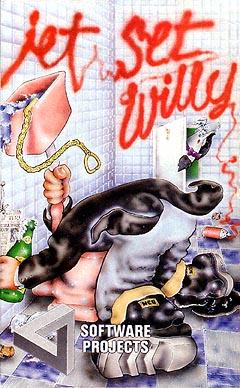
Jet Set Willy is a platform video game written by Matthew Smith for the ZX Spectrum home computer. It was published in 1984 by Software Projects and ported to most home computers of the time.
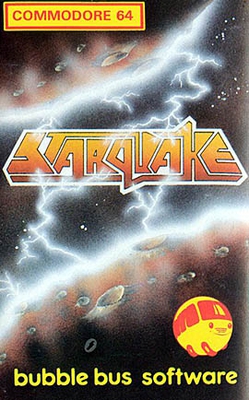
Starquake is an action-adventure platform game written by Stephen Crow for the ZX Spectrum and published by Bubble Bus Software in 1985. It was ported to the Commodore 64, MSX, Amstrad CPC, Atari 8-bit computers, Tatung Einstein, BBC Micro (1987), and IBM compatibles and Atari ST.
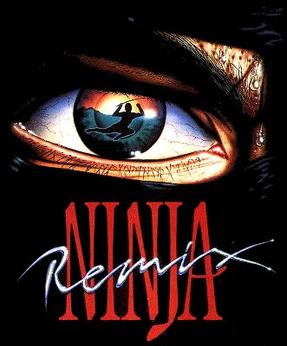
Last Ninja is a series of video games published by System 3. The first game in the series titled The Last Ninja, was released in 1987 for the Commodore 64 and was one of the most successful games for the system. In 1988, System 3 released Last Ninja 2, and in 1991 the third game in the series, Last Ninja 3. In 1990, Last Ninja Remix was released for 8-bit systems. This was Last Ninja 2 with new music, a new introductory sequence, slightly changed graphics and fixed bugs. Confusingly, the 16-bit versions of the original The Last Ninja game were also released in 1990 as Ninja Remix.

CRL Group plc was a British video game development and publishing company. Originally CRL stood for "Computer Rentals Limited". It was based in King's Yard, London and run by Clem Chambers.

Tynesoft Computer Software was a software developer and publisher in the 1980s and early 1990s.
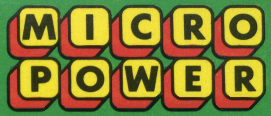
Micro Power was a British company established in the early 1980s by former accountant Bob Simpson. The company was best known as a video game publisher, originally under the name Program Power. It also sold many types of computer hardware and software through its Leeds 'showroom' or via mail order.

Artic Computing was a software development company based in Brandesburton, England from 1980 to 1986. The company's first games were for the Sinclair ZX81 home computer, but they expanded and were also responsible for various ZX Spectrum, Commodore 64, BBC Micro, Acorn Electron and Amstrad CPC computer games. The company was set up by Richard Turner and Chris Thornton. Charles Cecil, who later founded Revolution Software, joined the company shortly after it was founded, writing Adventures B through D. Developer Jon Ritman produced a number of ZX81 and Spectrum games for Artic before moving to Ocean Software.
Blue Ribbon was the budget computer software publishing label of CDS Micro Systems.

Graphic Adventure Creator is a game creation system/programming language for adventure games published by Incentive Software, originally written on the Amstrad CPC by Sean Ellis, and then ported to other platforms by, amongst others, Brendan Kelly (Spectrum), Dave Kirby and "The Kid" (C64). The pictures in the demo adventure, Ransom, were made by Pete James and the box cover art by Pete Carter.
Alligata Software Ltd. was a computer games developer and publisher based in Sheffield in the UK in the 1980s.
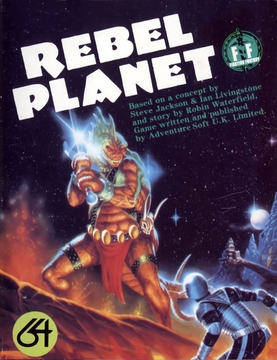
Rebel Planet is a role-playing video game published by Adventure Soft in 1985 for the Acorn Electron, Amstrad CPC, BBC Micro, Commodore 64, and ZX Spectrum.
Atlantis Software was a London-based UK computer games publisher that released a number of games during the 1980s and early 1990s.

Superman: The Game is a 1985 video game designed by Fernando Herrera and published in the US by First Star Software for the Commodore 64. For European release, Superman was ported the Acorn Electron, Amstrad CPC, Atari 8-bit computers, BBC Micro, and ZX Spectrum.

Brian Clough's Football Fortunes is a sports video game featuring English football player Brian Clough. It was released in 1987 for the Amiga, Amstrad CPC, Amstrad PCW, Atari 8-bit computers, Atari ST, BBC Micro, Commodore 16, Plus/4, Commodore 64, MS-DOS, Acorn Electron, MSX, and ZX Spectrum.

Indoor Sports is a sports video game developed by DesignStar's SportTime and first published in the U.S. by Mindscape in 1987 for the Commodore 64. Indoor Sports includes simulations of bowling, darts, ping-pong, and air hockey. It was converted to the Acorn Electron, Amiga, Amstrad CPC, Apple II, Atari ST, BBC Micro, MS-DOS, and ZX Spectrum. Verisons for the Commodore 16 and Commodore Plus/4 omit Air Hockey. In Europe it was published by Databyte, Advance Software, and Tynesoft, depending on the platform.
Addictive Games was a UK video game publisher in the 1980s and early 1990s. It is best known for the Football Manager series of games created by company founder Kevin Toms. The company was originally based in Milton Keynes, England, and later relocated to Bournemouth, in southern England.
Tiertex Design Studios Limited was a British software development company and former video game developer based in Macclesfield, England; it was founded in 1986, focusing on porting games to home computers and handheld platforms.
The English Software Company, later shortened to English Software, was a Manchester, UK-based video game developer and publisher that operated from 1982 until 1987. Starting with its first release, the horizontally scrolling shooter Airstrike, English Software focused on Atari 8-bit computers of home, then expanded to other platforms. The company used the slogan "The power of excitement".

By Fair Means or Foul is a boxing video game first published for a range of 8-bit home computers in 1988 by Superior Software. It was later reissued with the new title by Codemasters who also published conversions for 16-bit computers. The game offers a variety of boxing moves including fouls. The game received mixed reviews.














